It was only a few months ago that I was putting 4x Sheoldred, the Apocalypse in every deck I was brewing and telling people that somehow Sheoldred is still underrated.
Now, I find myself running zero Sheoldred and 4x Archfiend of the Dross in my brews. In Rakdos Midrange, we are starting to see a shift from just running Sheoldred to sometimes seeing a 2/2 split between Sheoldred and Archfiend. Archfiend has been around for 9 months, so this is not a story about a card from the latest set shaking up decks.
A simple explanation for what is driving this change is that Phoenix has become one of the format’s top decks and Sheoldred dies to Lightning Axe, while Archfiend does not. And that is definitely a part of the story that I will get to, but I think there is something interesting going on here that is worth exploring at a deeper level as it can help us understand the format and improve all of our brews.
A Format’s Scarce Resource
I want to start by thinking about the question at one level higher: “why do we want either Archfiend or Sheoldred?”.
What is interesting about both of these cards is they both fail the “dies to removal” test that everyone myself included always cite. Neither of them have an ETB to offset this loss. Neither of them have Ward for some additional value in the face of removal. They are saying I am powerful enough that if you do not have removal I am worth it, which sounds a lot like how I heard Baneslayer Angel described in the past.
One part of the story is they are both a bit more resilient to removal than they look, where Red removal does not trade one for one with Archfiend and Sheoldred demands having the removal on hand because she limits the ability of your opponent to dig for removal. Still, both of them can be killed by Fatal Push and losing 4 mana to 1 mana is a disaster. So why do we want either Archfiend or Sheoldred.
This is where I think we need to understand what are the scarce resources in Pioneer.
For most of Magic’s history, value/card advantage was one the key scarce resource where running out of things to do with your mana was a huge limiter. However, with modern card design, there is value everywhere and you can build tons of different types of decks that are able to spend their mana every turn.
So in that value filled world, your key scarce resource changes. In Pioneer, with decks that are both resilient to interaction and can quickly go over the top like Lotus, Mono-Green, Convoke I see two key scarce resources:
High impact one mana cards- Your list on which make the cut for “high-impact” will differ, but I think it is safe to say there are fewer than 10 in the entire format: Llanowar Elves, Elvish Mystic, Fatal Push, Thoughtseize, Consider and a few others.
Ability to close out the game efficiently- Which is the focus of this post, since this is the dimension Archfiend and Sheoldred stand out on.
As an aside from an outside observer, in Modern the key scarce resource still seems to be value/card advantage, but that is more a function of the free spells make running out of things to do the big constraint, which is why cards like Beanstalk and The One Ring have such a big impact.
Evidence of “Ability to Close Out the Game Efficiently” Being a Scarce Resource
I like to look at what change launches a deck into being a top tier deck for much of my format theorizing.
Mono-Green is to me the key example of this “Ability to Close Out the Game Efficiently” constraint. It was an ok Tier C or D style deck and then the Pestilent Cauldron combo was discovered that enabled the deck to reliably close out the game a turn or two faster and the deck quickly shot up the ranks to being one of the best decks in the format.
Rakdos Midrange I view as another example, where the introduction of Sheoldred is what triggered its rise through the ranks to the top of the meta because it added this “Ability to Close Out the Game Efficiently” dimension.
We can see this effect in recent meta changes. After WOE, Boros Convoke suddenly felt way more powerful to me. What changed was it added Imodane’s Recruiter, which has been a key player in helping the deck translate its superior board position into closing out the game.
The additions of Voldaren Thrillseeker and The Huntsman’s Redemption, seem to have really leveled up Gruul Chariot. You are replacing Sky Soveriegn, which is a 5 mana card that cleans up the board, with cards that can just kill your opponent on turn 5.
Rona Lukka Combo does not support this thesis, that seems more like a story of deck building innovations that massively increased the decks resiliency without slowing it down much.
Izzet Phoenix’s rise is also not tied to an increase in the ability to close out the game efficiently, but is tied to the other scarce resource of One Mana cards, where the addition of Sleight of Hand launched it to the top of the Meta.
Evaluating Archfiend and Sheoldred through the “Ability to Close Out the Game Efficiently” Lens
As mentioned above, Sheoldred’s “Ability to Close Out the Game Efficiently” was a key part of the rise in Rakdos Midrange. Before adding Sheoldred the deck was full of more value creatures or planeswalkers like Kalitas, Chandra, Sorin that gave the opponent time to get back into the game and go over the top of what you were doing.
All it took was one game playing with a Kalitas in an empty board, just slowly doing 3 damage a turn, and then having your opponent find removal or combo off to want to give up on the deck.
Then, Sheoldred came in and that 3 damage suddenly became 6+ damage a turn, able to attack through more board states, and able to shutdown decks like Lotus that did not rely on the battlefield.
If we think about this in pseudo goldfishing terms where the opponent is at 14-16 life by turn 4. Sheoldred is closing out the game in 3 turns while closing off the ability for opponent to draw into answers. Kalitas, Chandra, Sorin are all taking 5-6 turns.
Now let’s look at Archfiend. It is doing 6 or 8 damage a turn. It also can attack through more diverse board states than Sheoldred thanks to flying. So in the pseudo goldfish terms it is even better than Sheoldred, killing in 2-3 turns.
Archfiend also has combo potential with Metamorphic Alteration to make the pseudo goldfish even faster.
So from the lens of “Ability to Close Out the Game Efficiently” being the scarce resource, there is a strong argument that Archfiend is better than Sheoldred. That being said it is close and while I say “scarce resource” it is not the only resource. Sheoldred reduces the ability of the opponent to dig for answers and interacts favorably against more spell based decks like Lotus.
Before WOE, I do not think people were wrong to be playing Sheoldred over Archfiend, but what has changed with WOE to shift the balance more in favor of Archfiend?
The Changing Meta
As mentioned at the start, most notably Phoenix has surged back from seeing low play to being one of the most popular decks. Lightning Axe kills Sheoldred for one mana, which is something of a disaster. In contrast Archfiend requires multiple removal spells and can block Phoenix.
But it is not just Phoenix, several other decks have risen thanks to WOE. Let’s look through the other top Pioneer decks based on PlayingMTG’s Tier List from a week ago from the perspective of Archfiend vs Sheoldred.
A Tier:
Izzet Phoenix- Archfiend is better, though it is not like it is an auto-win. In some games Phoenix can keep blocking Archfiend and you risk losing to the oil counters running out. Other games they are able to keep up pressure and force you to block a Phoenix with the Archfiend and then Fiery Impulse the Archfiend.
Rakdos Midrange- Sheoldred is better, but the Archfiend is not bad and the decks I brew tend to be good against Rakdos midrange in general.
Rakdos Sacrifice- Archfiend is substantially better. Sac clogs up the ground from blocking, while grinding down your life total with cat/oven. Archfiend swings over in the air while effectively turning off cat/oven.
Boros Convoke- Archfiend is substantially better, especially if you have access to the Metamorphic Alteration combo. All the creatures in Convoke can become a bit of a liability when each death leads to loss of two life and the combo helps you kill faster. It allows you to operate at the same speed as Convoke when paired with a couple removal spells.
B Tier:
Mono-Green Devotion- Archfiend is substantially better. It can attack over to kill planeswalkers, survive against a Cavalier, and just kills faster which is key. And that is just Archfiend on its own, the Metamorphic Alteration combo can be big in this matchup.
Lotus Field Combo- Sheoldred is substantially better. Sheoldred when curved into can effectively lock Lotus out the turn it is played, which is huge against Lotus, especially when they are on the play.
Gruul Sagas- I am not sure. Archfiend is better if you have access to the Metamorphic Alteration combo. I am leaning Archfiend in general because being able to block and survive against Lovestruck or the Beast token when it is a 5/5 from stage 3 of Huntsman seems very valuable. But I suspect this will vary based on specifics of deck construction.
Rona Combo- I suspect Archfiend is better in general just because it kills faster and is substantially better if you have access to Metamorphic Alteration (they Lukka into Atraxa, then you combo them on your turn).
Archfiend comes out of the above looking fairly good. What is particularly striking is that while a few of the matchups like Phoenix and Sac it comes out better because it lines up better with specific aspects of the deck, several of these matchups it comes out looking better largely on the back of its faster pseudo goldfish, specifically against the linear, resilient, no interaction, creature based decks: Boros Convoke, Mono-Green Devotion, Rona Combo.
You beat these decks by being faster than them. Your interaction can slow them down a bit, but cannot fully control them, so you need to pair that interaction with a fast kill. It is hard to kill fast without a deck solely focused on doing that like Boros Heroic. It is especially hard to kill fast with a single card, but Archfiend kind of does that.
Notes on the Metamorphic Alteration Combo
It comes out of the above looking way better than it actually is. It is an awkward combo and Metamorphic is a dead draw in a number of games. I like it out of the board for against the linear, resilient, no interaction, creature based decks like Mono Green and Rona.
Post board it plays better because you are bringing in more interaction, which slows the game down a bit to give you a chance to assemble the combo.
Going Forward
In the most recent update to the PlayingMTG tier list Lotus Field Combo has moved up to A Tier, Boros Heroic (a Sheoldred favored matchup) has moved up to B Tier, and Boros Convoke (a Archfiend favored mathcup) has shifted down to B Tier. So the meta is changing in a way that could lead back to Sheoldred.
In a “vacuum”, Sheoldred does seem like the better card and has a stronger pedigree, so we should not be ready to dethrone it for Archfiend. However, Archfiend does seem better at providing one of the formats key scarce resources with its “Ability to Close Out the Game Efficiently”.
Lost Caverns is about to drop and will shake up the meta. It may push one of Sheoldred or Archfiend more clearly to the top, or could begin to push both of them out by changing the demands of the format that make it more hostile to 4 drops in general.
Regardless, going forward as we consider cards and decks we should look through the lens of “Ability to Close Out the Game Efficiently”, as those will be the cards and decks that continue to surprise us by playing out better than they look at first glance.




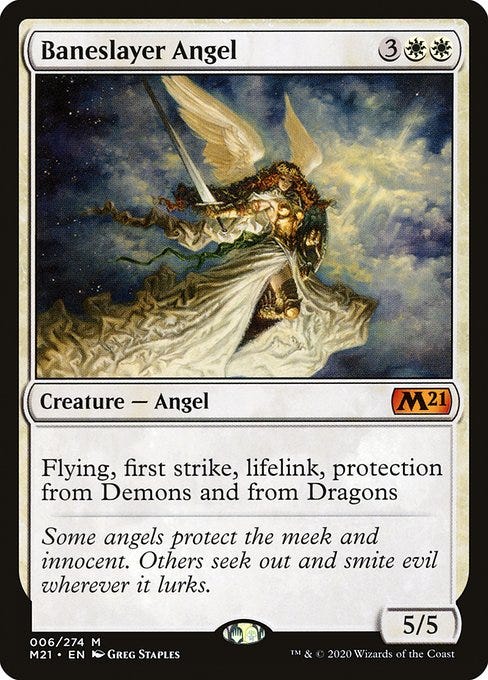

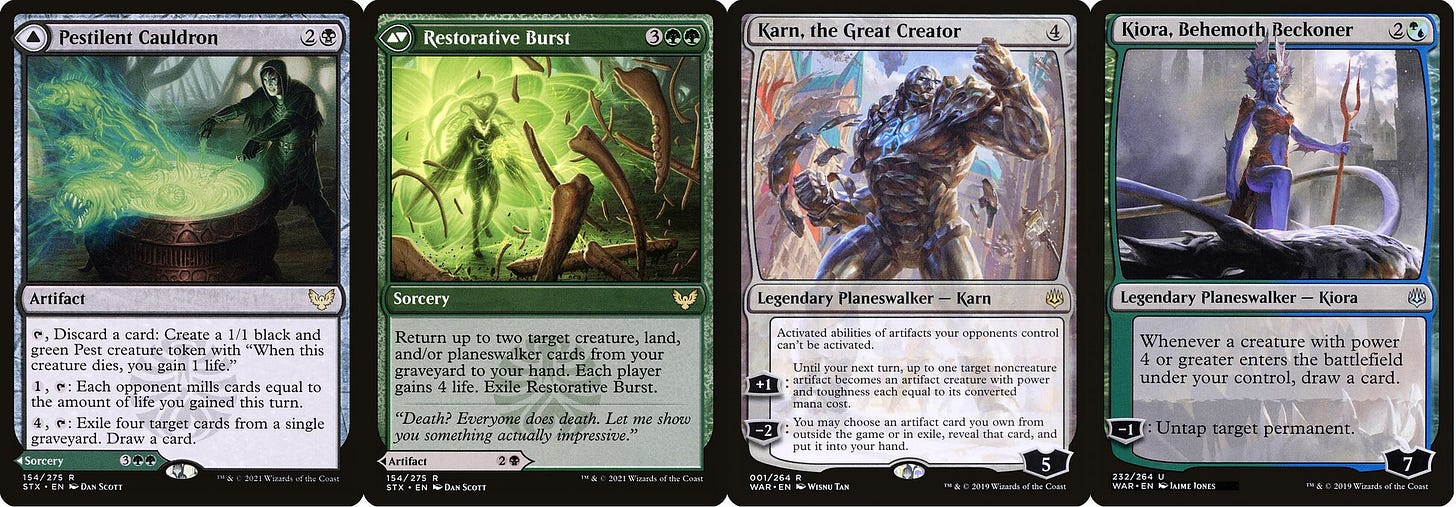
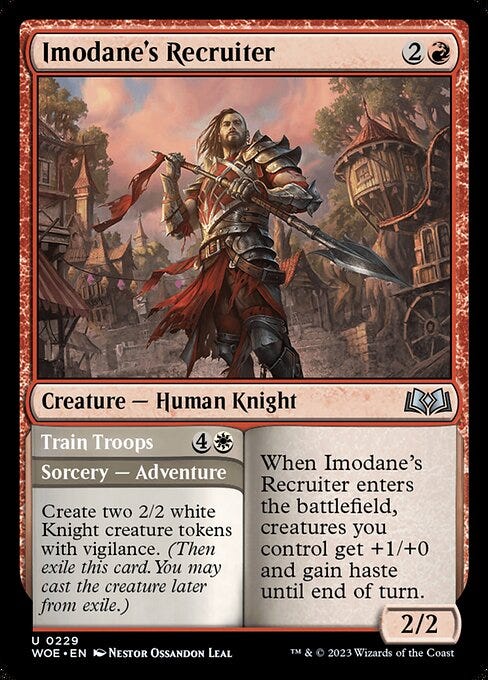
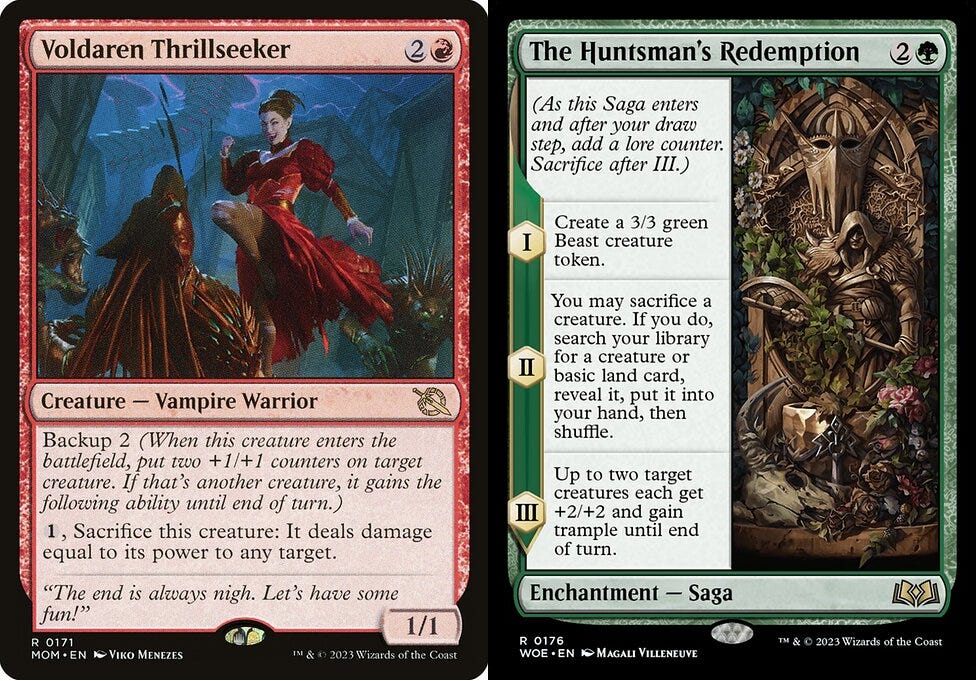
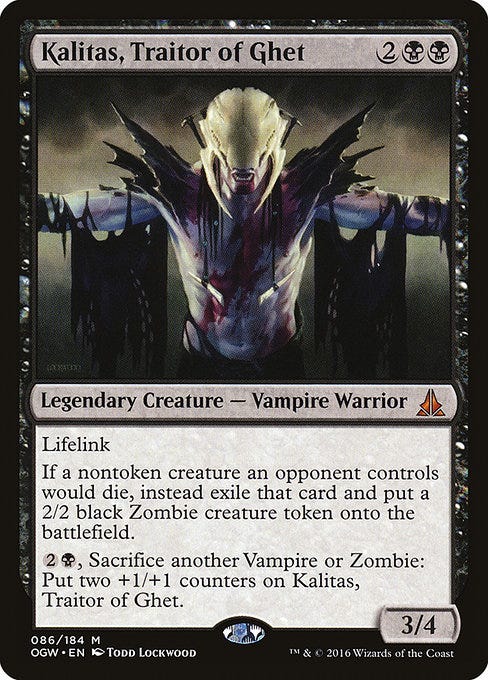
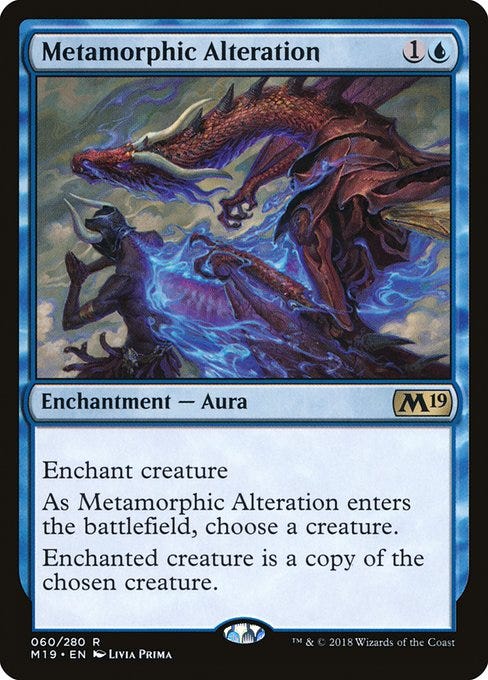
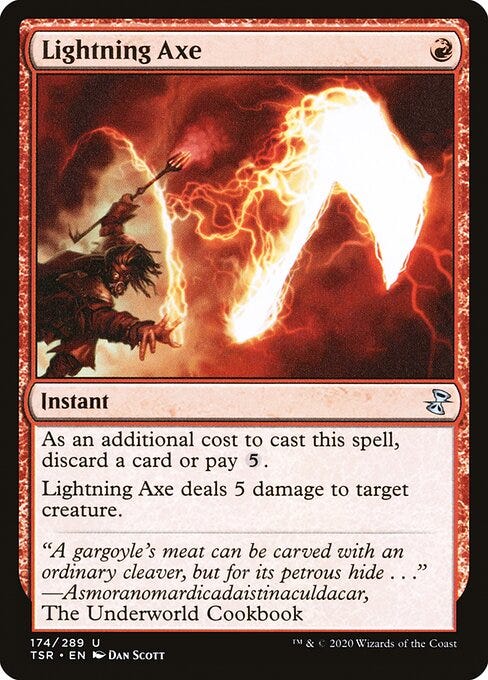
Absolutely love reading your articles :)
What do you think about a deck using Wildgrowth Walker and Amalia Benavides Aguirre?
Maybe the maindeck could be combo and then side into a butterfly/transformational sideboard/midrange strategy? Seems like a really cheap boardwipe/win-con and also access to good sideboard cards like Rest in Peace.